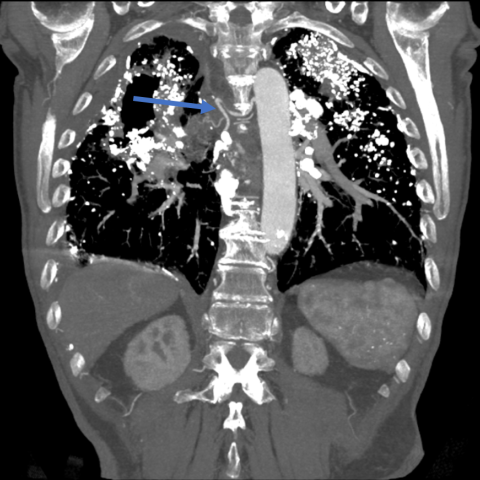What is Berylliosis?
Berylliosis, also known as Chronic Beryllium Disease (CBD), is a granulomatous lung disease caused by exposure to beryllium, a lightweight metal used in various industries. This condition results from an immune response to beryllium particles or fumes, leading to inflammation and scarring in the lungs.

Causes of Berylliosis
Occupational Exposure
The primary cause of berylliosis is prolonged exposure to beryllium in occupational settings. Industries with significant beryllium use include:
- Aerospace and defense
- Electronics manufacturing
- Metal machining and fabrication
- Nuclear energy
- Ceramics and glass production
High-Risk Activities
Specific tasks that increase exposure risk include welding, grinding, and machining beryllium-containing materials. Inhaling beryllium dust or fumes is the primary route of exposure.
Genetic Predisposition
Certain genetic factors, such as the presence of the HLA-DPB1 gene, can predispose individuals to beryllium sensitization, increasing their risk of developing berylliosis.
Symptoms of Berylliosis
Its vary depending on the disease’s progression and severity. Common signs include:
- Persistent cough
- Shortness of breath (dyspnea)
- Fatigue and weakness
- Chest pain
- Unintended weight loss
- Fever and night sweats
In advanced stages, berylliosis can lead to respiratory failure and other complications.
Diagnosis of Berylliosis
Medical History and Occupational Exposure
A thorough medical history, including details of occupational exposure to beryllium, is essential for diagnosing.
Diagnostic Tests
Several tests help confirm the diagnosis:
- Beryllium Lymphocyte Proliferation Test (BeLPT): Measures the immune system’s response to beryllium exposure.
- Pulmonary Function Tests (PFTs): Assess lung capacity and function.
- Imaging Studies: Chest X-rays and high-resolution CT scans reveal granulomas and fibrosis.
- Bronchoscopy and Lung Biopsy: Collect samples for microscopic examination.
Differential Diagnosis
Berylliosis shares similarities with other lung diseases, such as sarcoidosis. Accurate diagnosis requires ruling out these conditions.
Treatment of Berylliosis
Avoiding Further Exposure
Preventing additional exposure to beryllium is critical. Employers should implement safety measures, such as proper ventilation and personal protective equipment (PPE).
Medications
- Corticosteroids: Reduce inflammation and improve lung function.
- Immunosuppressive Drugs: May be prescribed for severe cases.
Pulmonary Rehabilitation
Rehabilitation programs help improve breathing and overall quality of life through:
- Exercise training
- Nutritional counseling
- Psychological support
Advanced Therapies
In cases of severe lung damage, oxygen therapy or lung transplantation may be necessary.
Prevention of Berylliosis
Workplace Safety Measures
Employers and workers can reduce exposure risks through:
- Engineering controls, such as local exhaust ventilation
- Regular air monitoring
- Providing PPE, including respirators
- Employee training on beryllium hazards
Regulatory Compliance
Adhering to guidelines set by organizations like OSHA and NIOSH is vital for maintaining workplace safety.
Prognosis of Berylliosis
The prognosis varies based on the disease’s severity and the effectiveness of interventions. While early diagnosis and treatment can manage symptoms and slow progression, chronic cases may lead to long-term health challenges.
For more information on occupational lung diseases, consult your healthcare provider or trusted medical resources.
MYHEALTHMAG

